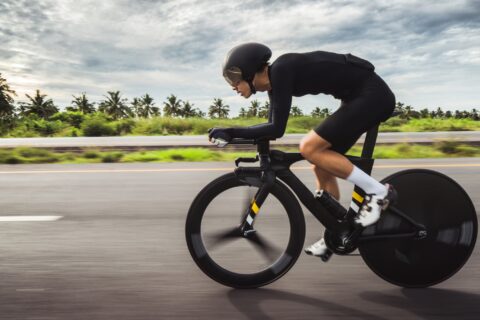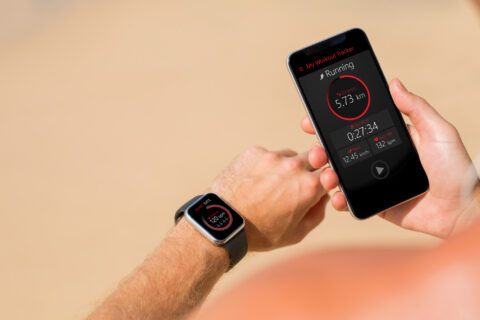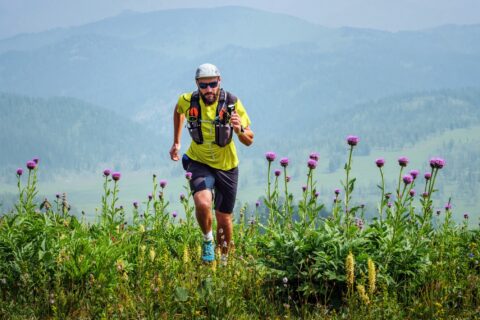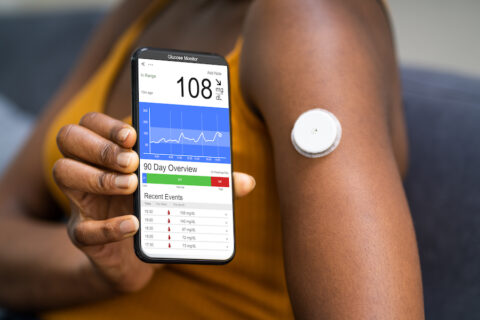Cardiovascular drift is an instability in heart rate and stroke volume over time. We show you how to determine it.
Video Transcript
Chris Case 00:16
Welcome to Fast Talk Laboratories, your source for the science of cycling performance.
Trevor Connor 00:26
Well, welcome back to another tip session. I’m here with COACH RYAN Kohler. How you doing, Ryan?
Ryan Kohler 00:32
Great.
Trevor Connor 00:34
Today we are talking about how to measure or see cardiac drift in your rides, we’ve been talking a lot about cardiac drift lately, we actually did an episode of the podcast with Dr. Coyle, who is a legend in exercise physiology and talked with him about, So it’s actually cardiovascular drift. And what that means, we’ve been asked a lot about that people want to see that I am a big believer that as long as you are hydrating, effectively, cardiovascular drift is a sign of your aerobic fitness. And we talked about how if you’re out doing a long ride, if somebody is lacking aerobic fitness, you’re going to see that cardiovascular drift quite rapidly. And you can see quite large. So that’s where give you a quick explanation. If you are watching your power, watching your heart rate and you’re riding at a steady power, you’re going to start seeing that heart rate drift up and that’s why it’s literally called cardiovascular drift. A really fit, if you took like a tour de France level athlete, they could go out and do a six hour ride. And the powers of their let’s say doing that six hour ride at 220 watts, their power near the start or the heart rate near the start of that ride, it’s going to be pretty much the same as it is at the end of that ride at that same wattage, you took somebody who doesn’t have the same fitness, they went out and did the same six hour ride, they might be starting at 120 beats per minute. And by the end of that ride at the same power, they’re 145-150 beats per minute. And that’s important because A it’s an indicator of your fitness B, It also means that if you don’t adjust your ride, you’re training very different energy systems at the end of that ride than you are at the beginning of that ride.
Ryan Kohler 02:22
Well, I know this is a hot topic, we’ve talked a lot about this. So yeah, I mean, for the athletes listening to this and saying, Oh, well, you know, I see that happen, you know, 45 minutes into my ride or an hour into my ride. What do I do next? You know, how do we accommodate that? Do we if we have a four hour ride planned? Is it a matter of just? Yeah, can we just dial the power back and then control by heart rate? Or, you know, should we say okay, well, should I ride a certain amount of time and beyond that to to get the best adaptations,
Trevor Connor 02:50
right. So if you’re going too hard, you’re going to see that cardiovascular drift quite early. So for example, if you’re just doing threshold intervals, you’re going to see at 20 minutes into your ride. If you’re doing a long ride, and you’re doing it effectively, most people can get through a few hours before they really start to see it. My general recommendations of my athletes is A control the ride, make sure you’re staying in that zone one and a three zone model or below your aerobic threshold. And when you start seeing that cardiovascular drift, which is hopefully a couple hours in, you’ll see a little bit but there’s a point where you can really go Wow, look at my heart rates shoot up or if you’re trying to keep your heart rate steady. Wow, look at my power just plummet. I tell my athletes right another 30 to 45 minutes past that point. Or if you’re like me, frequently, you’re way up in the mountains, you have three hours home and you got nothing you can do except ride it out.
Ryan Kohler 03:45
So you force yourself into those situations
Trevor Connor 03:49
I put myself in a lot of bad places. So yeah, that’s a do as I say, not as I do. Don’t be an idiot. And I am an idiot frequently. But yes, if you are properly controlling your ride, you probably have a sense of where that point is and just time it so that when you start to see that if you’re holding your power, your heart rate steady, which is what I recommend, so you’re continuing to work the same system. When you start to see that power plummet. This is time ago. Okay, let’s start heading home. So the question is, how do you measure cardiovascular drift? There’s a few ways. So I’m going to show you first in training peaks. Some of the the basic ways to do it here is a good hard ride I did last summer where I throttled myself and I definitely had a lot of cardiovascular drift. So one of the simplest things to look at is this pw colon HR. So that basically just stands for power to heart, rate. What it does is it takes the first portion of your ride, and the last portion of the ride looks at the heart rate relative to I believe normalized power and that first part looks at the power, the heart rate relative to normalized power in the second half, and basically says, What’s the change. So with me, you’re seeing a 15.4 or 5% change, that’s big. That means I was limping home by the end of this ride. So sometimes I like to do that that was the purpose of this ride. That’s why you’ll even see the name of this ride was killer boulder ride. Because when you’re doing big stage races and long races, there is a bit of a benefit to that just not something to do that frequently. So that’s one of the easiest ways. Another really easy way is to simply actually can’t do it on this ride because you see my heart rate and power are quite variable with the climbing. But let me take a different ride. In training peaks, here’s one that I did with Chris, Chris, and I went out with one another and try to do a steady ride and see if we could destroy one another. And we were quite successful, though, you notice on this one, my cardiovascular drift is less. So 10%, still pretty big, we were not talking nearly as much at the end of the ride, we were at the beginning. But here you can kind of take a look at this and go, here’s kind of a steady portion with where the power is relatively steady, I can take that segment go, average power is about 223 heart rate was 140, then I can go later in the ride, find something that’s hopefully about the same power. So that’s a little lower power. Take that little segment there. So there’s 216 powers lower, but you can see heart rates higher 146. So you can see heart rate is drifted up relative to the power. It’s one of the ways to look for it. That’s some of the most simple ways to do it. Let’s jump over to WKO, and I’ll show you a little more sophisticated ways of doing this. So now we’re into WKO, and again, you can build some pretty sophisticated graphs in this a lot of the other tools such as golden Cheetah allow you to build very similar graphs. Let’s start with this one down here. I’m gonna zoom in on this. So we’re looking at that same ride that I showed you where Chris and I kind of beat one another up. gonna zoom in. Now this was a graph that I used Originally, the gold is my power, the red is my heart rate. And you can see I just did a trend line here of my heart rate in my power and you can see the heart rates trending upwards, powers trending downwards, that’s a clear sign that I was getting fatigued, was steady over the course of the ride. And that gray line is the relationship of the heart rate to power, and you can see it’s trending downwards, which is an indicator of cardiovascular drift. And WKO, they call it decoupling. So there’s that 10.91% decoupling and the PW to HR are the same things, just different titles for the same thing. So here’s a another graph that you can use to give you a little more information. But the most sophisticated, unfortunately, this doesn’t come with WKO you have to build it. And it’s a fairly complicated graph is this one right here. So this takes the same concept.
Trevor Connor 08:27
But looks at power relative to heart rate. Trying to think of how to simplify it is very complex math here, but it’s basically taking a percentage of your heart rate reserve to percentage of your FTP power. And then using a very complex formula I won’t get into looks constantly at where they are relative to one another and you see this dotted line. That is your one point. And the idea here is when you are fresh, you should be right around one, provided you’re keeping all these metrics accurate. It also uses your five minute power to help figure this out. So you can look at the trend over the course of the ride and see that I started the ride right around one that was pretty good. It actually picked up a little bit but still sitting right around one. But as you’re getting further and further and further into this ride, you can see this green line is really getting up above one and that is a big indicator of cardiovascular drift. Another couple interesting things to show are sometimes this can be a little bit fooled if you’re on a really hilly route with lots of downhill because you can see when I was descending, I dropped away below one because it just doesn’t quite know how to deal with the fact that my heart’s gonna keep beating even when I’m not pedaling the bike. Another thing to look at is when you take long rests so here’s a basically we got to Chris’s house. We stopped for a bit I think we were there for about two 30 minutes, then I rode home. And you can see I’m right back down towards one. So you can say, well, that’s a good thing, take a rest. But my counter argument is going to be, if you’re going out and doing these long rides, and this is the system you’re trying to train, and you want to push it a little bit, taking these long rests, brings it back to normal, you’re not stressing the system. So you don’t get quite the same game. So this is one of the reasons I am very against the stop at a coffee shop in the middle of a long ride.
Ryan Kohler 10:32
Yeah, I mean, this the green line here, I mean, it’s it’s pretty striking. You know, you can you can easily tell, and it seems like I mean, we have a whole range, we can go very sophisticated graphs, and all the way down to just chunking up different parts of our ride and looking at power and heart rate. But yeah, you can really see the the striking difference here later in that ride, when you Chris, we’re really digging into one another there. And the changes. So yeah, I think it’s kind of a, you know, pick the right chart, or the right tool for what you have is kind of what I’m getting from it, you know, if you don’t have access to this, you know, I think we’ve got a couple methods that seem to work. Whereas if you see those lines trending away from one another, it’s it’s a great indicator for athletes, dare I say it who aren’t training with power? Is there a way to feel this? Can you feel this kind of start to happen during a ride to?
Trevor Connor 11:24
Absolutely, I mean, you know, about how it feels when you’re going to certain tests. I mean, you simply if you’re on the flats, you can use speed to a degree. But you can certainly tell you know, what your heart rate should be at when in ride feels a certain difficulty. And if you’re looking down and go on, well, it feels this way. But boy, my heart rate is not at all where I expect, or likewise, you go, this feels really hard. But I’m chugging along at 12 miles an hour. These are little indicators that you’re struggling more. Yeah.
Ryan Kohler 11:56
Yeah, that’s great. I think this is this is great to sort of tie in, what’s really happening with those sensations you feel in a ride gives you more of that sort of intuitive feel when you go out next time.
Trevor Connor 12:05
Yep. And you know, this is a ride, I would not do a lot you can see I spent a lot of time where I was already well into that cardiovascular drift. I won’t lie. A lot of this was Chris and I were seeing who was going to crack first. And this little stretch over here when we were riding home on the flats. We weren’t doing a lot of talking, we were both just taking our polls going please crack please crack, please crack. Neither of us did. But when we got to Chris’s house, we have a lot of food. Now to show you another this is a ride I did with an athlete. It wasn’t a long ride. I wanted to keep it easy. I didn’t want to see any cardiovascular drift. And you can see here that is an example of a ride that just a good steady endurance ride where I am sitting on that one line for the entire ride. There is no cardiovascular drift, you look down here, my decoupling is 2.57%. So I was not stressing or pushing myself here. And that’s key. Some of your long rides. A lot of your long rides need to be this every once in a while during that ride. Like what Chris and I did. It’s a good thing, but it shouldn’t be every single long ride.
Ryan Kohler 13:21
Yeah, it seems to be the common, you know, hurdle is just to hard to often. Yep. You know, and but yeah, that’s a great looking graph there.
Trevor Connor 13:31
So probably a final question here is, how much of a rest is too much of a rest. And actually, this ride is a good example. I try to limit my rest to 10 minutes or under. So you can see there’s a couple times in this ride where Chris and I stopped for food. So here’s one, actually that one was a flat tire. Here’s one where he stopped for food. Here’s another one where he stopped for food. And you can see these are short enough. They’re 10 minutes or less, that when we get back on the bike ignore this is a descent, you’re still seeing that cardiovascular drift. This is getting to long. So this was I can’t really see here, but I would say this was about 30 minutes. And you can see by the end of that, I was back down to kind of that baseline. So I tend to tell my athletes if you want the full benefits of these rides, keep your rest. Ideally five minutes 10 minutes at the most. Ryan
Ryan Kohler 14:32
Just enough to get in and out of the store. Get a snack and keep moving right. Exactly. Yeah.





